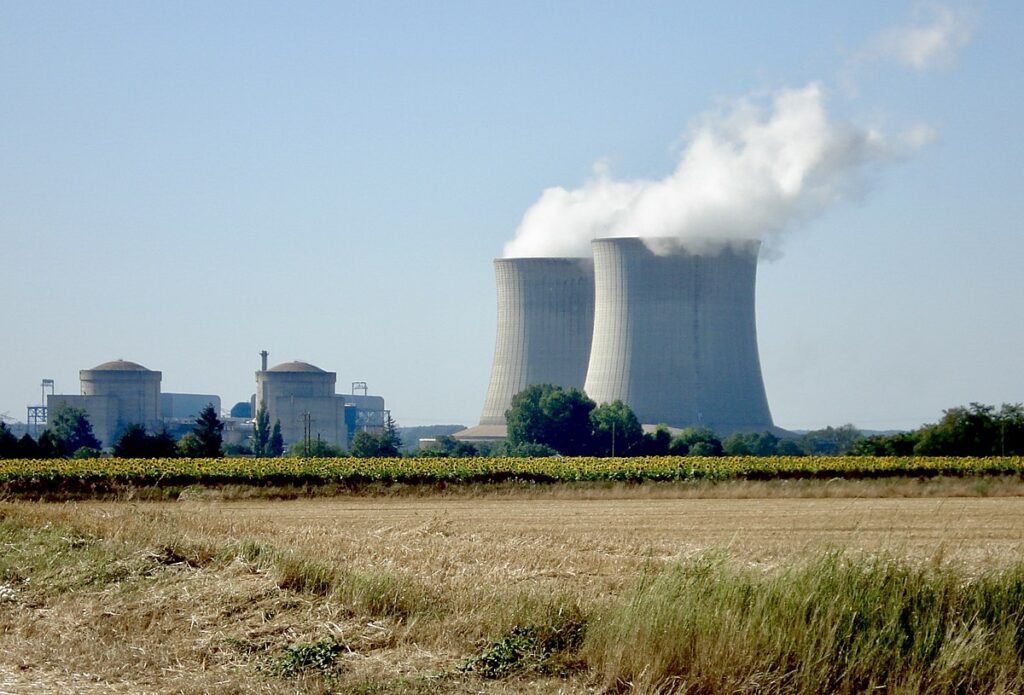On the surface, France is better prepared for failures of fossil energy imports than almost all other countries: the country has traditionally relied on nuclear power. The 18 nuclear power plants in France could actually supply the electricity needed reliably and independently, but only in theory. In practice, a large part of France’s nuclear power capacity regularly fails. The main cause is the age of the nuclear reactors.
Current situation of nuclear power plants in France
In France, electricity becomes scarce more often. This is followed by calls from the French grid operator RTE to save energy, affecting business and private households alike. Some companies even cool down their offices in winter to use less electricity. In some cases, France has to import electricity from other countries. Yet the country was once considered a showcase nation for electricity from nuclear power, as the annual WNISR (World Nuclear Industry Status Report) has frequently underlined. After all, there are 18 nuclear power plants in France, with 56 reactors in operation:
- 32 reactors produce 900 MW each.
- 20 reactors produce 1,300 MW each.
- 4 reactors each produce 1,450 MW.
In terms of gross quantity, only China and the USA generate more nuclear power, but in relation to the national energy supply, the nuclear power plants in France are the world leaders: when they were still running at full capacity (until around 2005), they generated 80 % of the domestic electricity. At that time, that was 430 TWh. They were considered reliable and safe, but above all they made the French energy supply at that time almost independent of fossil fuels or their import.

Image: T.A.F.K.A.S., CC BY-SA 3.0, via Wikimedia Commons
Development over the last two decades
From 2005 onwards, the importance of nuclear power plants in France gradually declined. In the meantime (as of 2022), they produce ~25 % less electricity than at that time. At times, half of the reactors are not available at all or not at full capacity. They are now outdated: On average, they were built 37 years ago.
After so many years of continuous operation, there must be signs of wear and tear, as experts note. The electricity supplier EDF is constantly trying to remedy them. But there are obviously also unplanned technical problems that occasionally lead to shutdowns. These have far-reaching consequences, because sometimes after a nuclear power plant has been shut down, EDF can no longer predict with certainty when it will be able to return to the grid. In total, the outages are enormous. In 2020, for example, there were a total of 6,465 outage days (sum of all reactors) at the nuclear power plants in France. Converted to the individual reactors, each of them did not supply electricity for an average of 115.5 days.
These failures exceeded the operator EDF’s forecast by 44 %. In some cases, recommissioning was postponed 40 times. Among other things, there is a lack of spare parts for repairs and maintenance because EDF has not had any since 2007. From a technical point of view, this cost-cutting measure is considered a fire hazard, because sometimes defective pumps are now repaired with old or unsuitable seals, which can quickly lead to a new failure or even an accident.
Nuclear power plants in France: problems caused by standardisation
For cost reasons, the nuclear power plants in France were built according to only three industrial standards, which led to the three reactor series mentioned above. From today’s point of view, this is considered a problem: namely, if there were errors in construction plans or parts decades ago, today they cause failures in several power plants at the same time. Such an error was discovered in the four 1,450 MW reactors, the largest and newest of their kind, in December 2021. Cracks appeared everywhere in the emergency feed system, which is elementary for safety.
This system compensates for a rise in temperature in the event of a leak in the primary cooling system. When the cracks were discovered, which took years to appear, but then occurred simultaneously in all four reactors, they had to be shut down immediately. In the middle of the winter of 2021/2022, France thus lacked 8.7 GW of electricity. Then three more reactors failed. Engineers in the French nuclear industry expect to identify such faults more frequently in the future.
Summary
The nuclear power plants in France no longer offer the security of supply they did 20 years ago. President Macron has nevertheless proclaimed a renaissance of nuclear power and wants to have at least six EPR-2 reactors built by 2050. He is also pushing SMR technology for mini-reactors. However, these technologies have practically not been tested yet. An EPR-1 reactor has been under construction since 2007 (Flamanville-3); it was supposed to deliver electricity in 2012 and is still not ready. Nuclear power plants in France are now considered a problematic technology.
